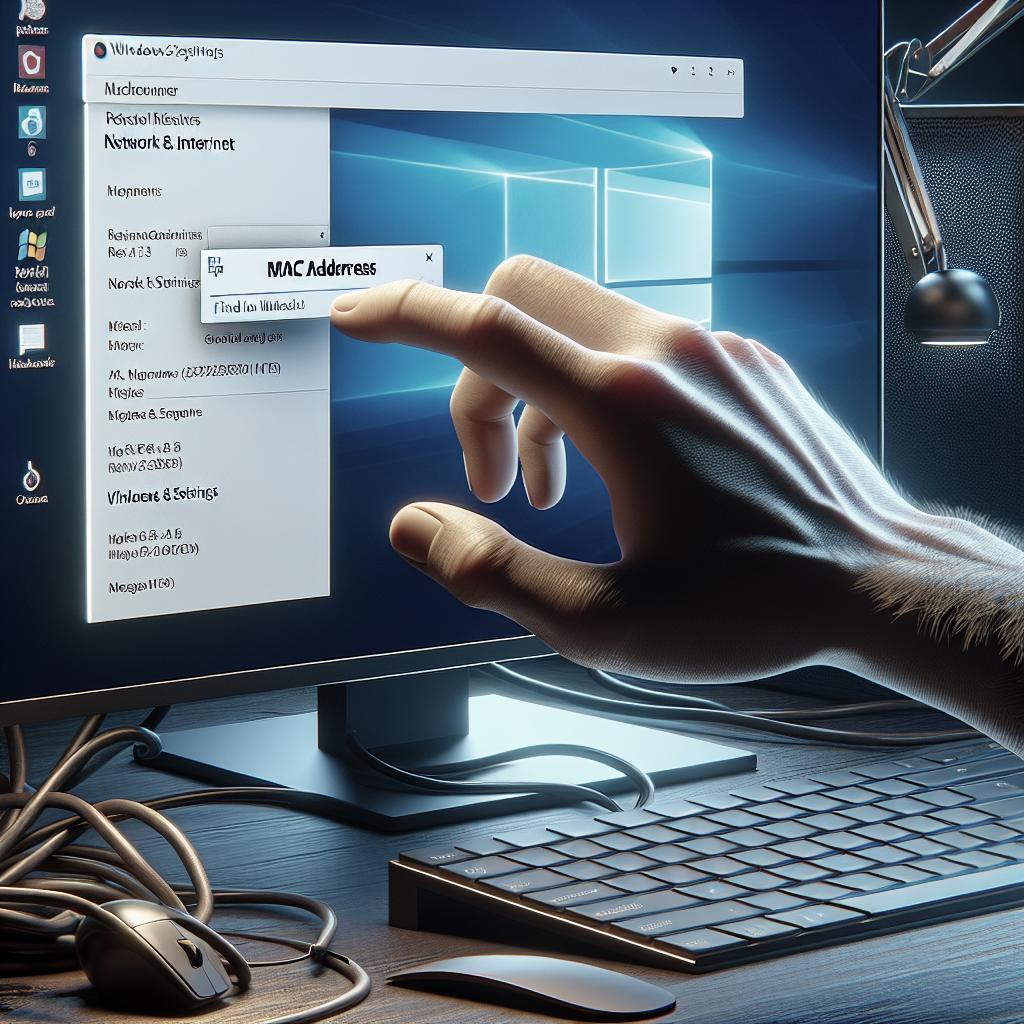How to Find Your MAC Address on Windows 11
Navigating the settings of modern operating systems can sometimes feel daunting, especially when searching for specific network details like your device’s MAC address. The Media Access Control (MAC) address serves as a unique identifier for your network adapter and is essential for network security and management. In this guide, we’ll walk you step-by-step through the process of locating your MAC address on a Windows 11 system. We’ll also differentiate between a MAC address and an IP address, clarifying their distinct roles in networking. For those interested in tech tips and more, we’ll guide you on how to subscribe to Tom’s Guide to receive the latest advice directly in your inbox.
1. Go to Settings > Network & internet > Wi-Fi/Ethernet
Finding your MAC address in Windows 11 starts with opening your system’s settings. You can efficiently access the Settings menu by clicking the Start button on your desktop and selecting the gear-shaped icon labeled ‘Settings.’ Once in the Settings menu, navigate to the “Network & internet” section, which houses all the network-related configurations.
Within the “Network & internet” section, you’ll find separate tabs for Wi-Fi and Ethernet connections. Depending on how your device connects to the internet, select either the Wi-Fi or Ethernet option. For laptops frequently connecting wirelessly, the Wi-Fi option is typically relevant. Desktop users or those with wired connections should choose Ethernet.
2. Click Hardware properties
After selecting the appropriate network type, you will see a list of available networks for Wi-Fi or the active Ethernet connection details. To delve deeper into the details of your network adapter, click on the “Hardware properties” link. It provides advanced information about the network interface card (NIC), helping users identify crucial information such as the MAC address.
The Hardware properties section displays a host of technical specifics, including your connection’s speed, the protocol in use, and other hardware identifiers. This area is vital for troubleshooting and security, providing insights into how your device interacts with the network.
3. Find MAC address
Within the Hardware properties section, locate the line labeled as “Physical address (MAC)” — this is your MAC address. It typically appears as six pairs of hexadecimal numbers separated by colons or hyphens. Each MAC address is unique to the hardware of your network interface and plays a critical role in identifying your device on the network.
Knowing your MAC address is useful for setting up network security protocols, such as MAC filtering, which restricts network access to authorized devices only. Furthermore, when assigning static IP addresses or troubleshooting connectivity issues, your MAC address provides necessary information that can guide network administrators in resolving problems.
What’s the difference between a MAC address and an IP address?
A MAC address and an IP address may seem similar at first glance, as both serve as identifiers for networked devices. However, their functions and specifications differ significantly. A MAC address is a hardware identifier permanently assigned to a network interface card by the manufacturer. It remains unchanged regardless of the network to which the device connects.
Conversely, an IP address is a logical identifier assigned by a network. It can change depending on the network configuration, such as switching between home and public networks. An IP address facilitates routing across networks by directing data packets to the correct recipient, akin to a postal address guiding the delivery of mail.
In terms of application, MAC addresses operate at the data link layer of the OSI model, while IP addresses function at the network layer. Understanding the distinction between these addresses is crucial for effective network management and ensuring seamless communication across different devices.
Sign up to get the BEST of Tom’s Guide direct to your inbox
Staying updated with the latest tech tips and trends can significantly enhance your digital life. By subscribing to Tom’s Guide, you gain access to expert advice, product reviews, and practical tips delivered straight to your inbox. Our dedicated team of tech specialists ensures you receive timely insights to make informed decisions about technology usage.
Simply visit our website and enter your email address to start benefiting from our content. Whether you’re a tech enthusiast or someone seeking advice to improve their tech skills, Tom’s Guide caters to a diverse audience by delivering premium content that’s tailored to your interests.
Summary of Main Points
| Steps | Details |
|---|---|
| Access Settings | Navigate to Settings > Network & internet > Wi-Fi/Ethernet |
| Hardware Properties | Click on Hardware properties to view advanced network details |
| Locate MAC Address | Find the “Physical address (MAC)” in the properties section |
| MAC vs IP Address | Understand the difference in function and application |
| Subscribe to Updates | Sign up at Tom’s Guide for expert tech tips |

